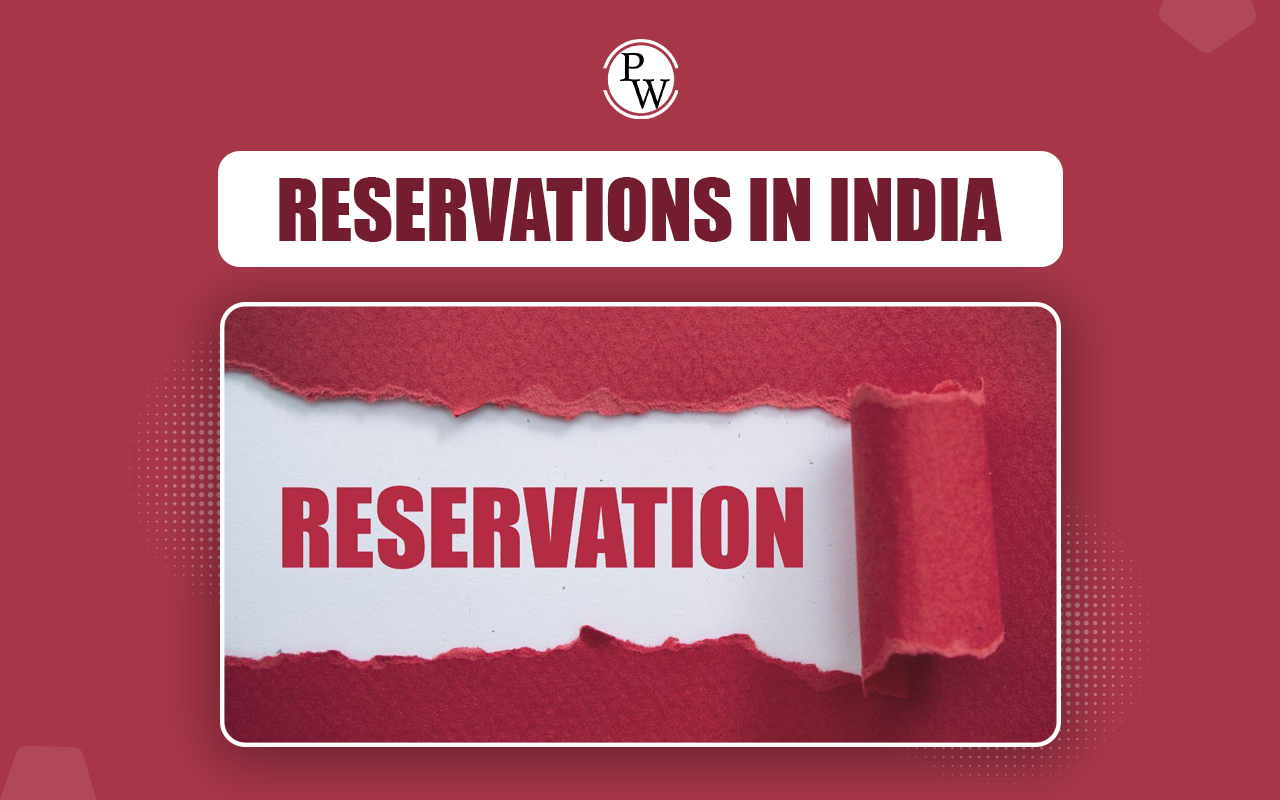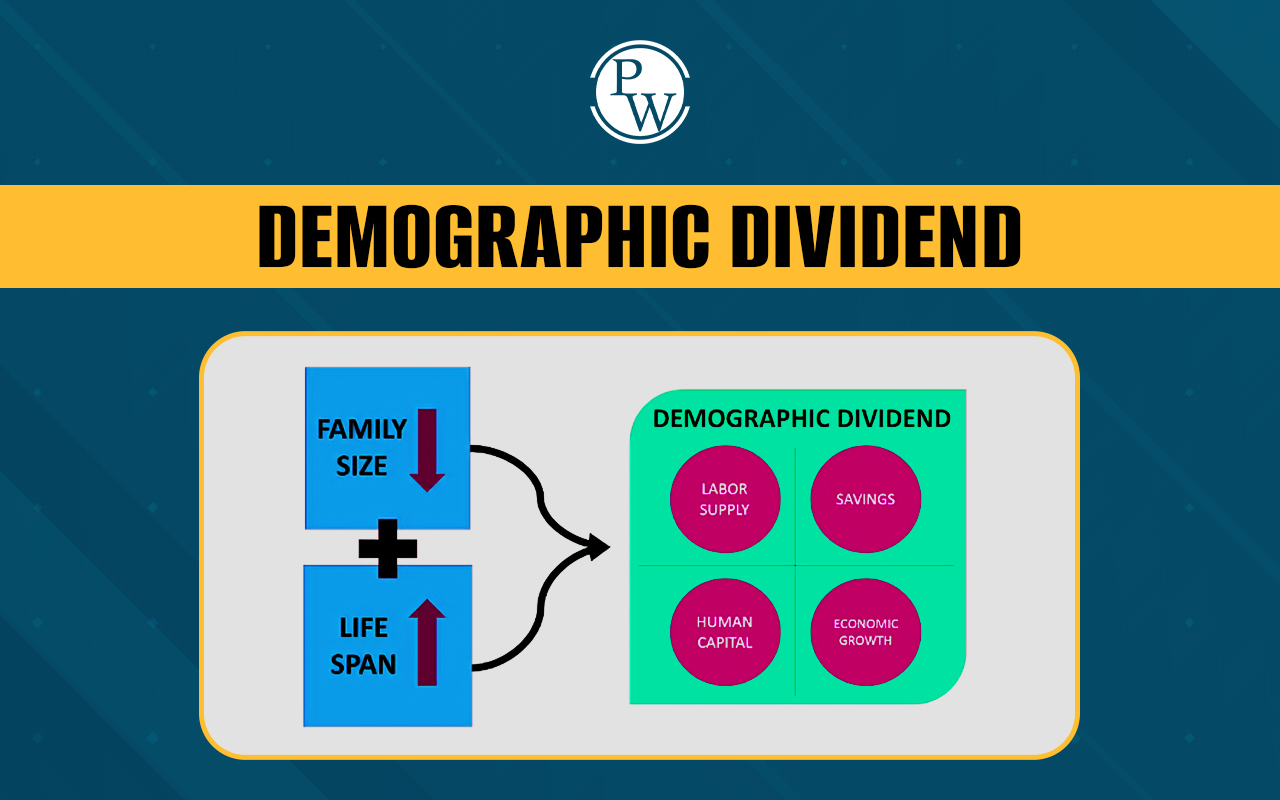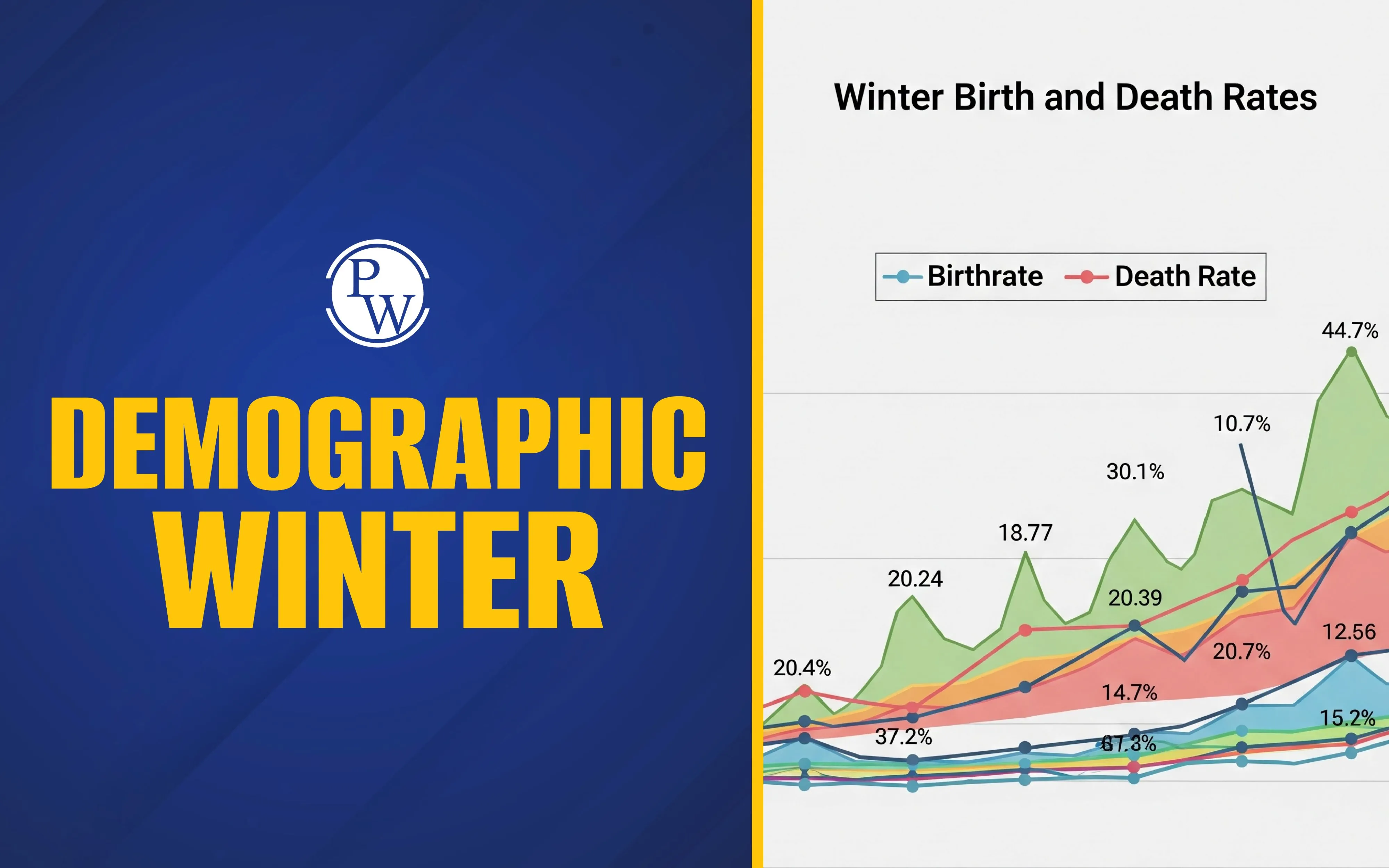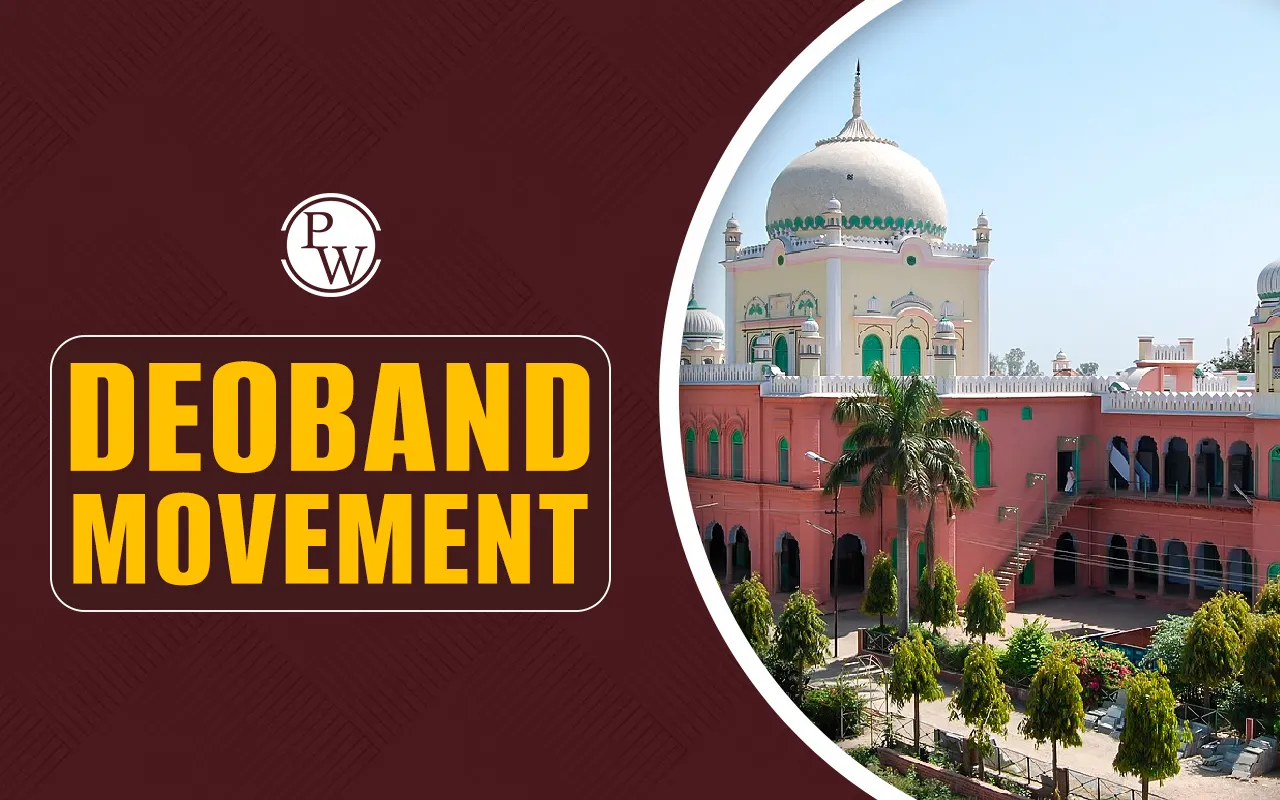

Reservations in India have been a crucial tool for addressing social inequalities and promoting inclusive growth. It aims to empower historically disadvantaged communities through education, employment, and political representation.
Over the years, this system has been shaped by landmark policies, constitutional provisions, and judicial interpretations. For UPSC aspirants, understanding the history of caste reservation in India, its purpose, and its current framework is crucial for both prelims and mains preparation.What is Reservation?
Reservation refers to the policy of providing preferential treatment to certain sections of society to ensure equality of opportunity. This system is commonly used to support marginalized communities, such as those based on caste, ethnicity, or socioeconomic status, who have faced historical discrimination or disadvantage.Reservations in India
Reservation in India means a system of reserving a certain percentage of seats for specific caste groups, especially those that have historically faced discrimination. The reservation policy in India applies in:- Education: Quotas in schools, colleges, and universities.
- Employment: Reserved posts in government jobs.
- Politics: Reserved seats in legislatures.
History of Reservations in India
The history of caste reservation in India dates back to the pre-independence era when the British introduced policies to uplift certain communities. The evolution of the reservation system can be traced through: Pre-Independence Era- In 1882, proposals for caste-based reservations were made by William Hunter and Jyotirao Phule.
- The Maharaja of Kolhapur, Shahu, implemented reservations for non-Brahmin and backward classes in education in 1902 .
- Government of India Act 1909 introduced limited representation for certain communities.
- The Communal Award in 1932 further expanded this by granting separate electorates to various communities, including the depressed classes
- Under the leadership of Dr B. R. Ambedkar, the Indian Constitution institutionalized affirmative action (Article 15(4) and Article 16(4)), focusing on SC/ST communities.
- The first backward classes commission in 1953, led by Kaka Kalelkar, laid the groundwork for future policies.
- Mandal Commission (1990) recommended 27% reservation for OBCs, significantly expanding the scope of reservations in India.
- The Indian Parliament passed the 103rd constitutional amendment in 2019 providing a 10% reservation for economically weaker sections among the general category.
| Mandal Commission: The Mandal Commission was a turning point in the reservation system. Set up in 1979 under the chairmanship of B.P. Mandal, it was tasked with identifying socially and educationally backward classes and recommending measures for their upliftment. In 1980, the Commission submitted its report, recommending a 27% reservation for OBCs in government jobs and educational institutions. |
Purpose of Reservation in India
The primary purpose of the reservation system in India is to correct historical social and economic imbalances caused by the caste system. Here’s why reservations are considered necessary:- Promoting Social Equality: By reserving seats for selected categories, the government ensures that these communities are not left behind in the development.
- Economic Upliftment: Reservations in jobs and educational institutions create opportunities for upward mobility, allowing individuals from backward communities to improve their economic status.
- Political Representation : Reservation in legislative bodies ensures that these communities have a voice in the decision-making process.
- Preventing Caste-based Discrimination: Reservations also play a role in combating caste-based prejudice by facilitating better access to resources.
Constitutional Provisions on Reservation in India
The Constitution of India has made specific provisions regarding reservation to ensure the welfare of backward classes. Key Articles related to reservation include:| Constitutional Provisions on Reservation in India | |
| Provision | Description |
| Part XVI | Deals with reservation in Central and State legislatures for SCs and STs. |
| Article 15(4) | Allows special provisions for the advancement of backward classes in education. |
| Article 16(4) | Enables reservation in government services for SCs and STs. |
| Article 330 | Provides reservation of seats for SCs and STs in the Lok Sabha (House of People). |
| Article 332 | Provides reservation of seats for SCs and STs in State Legislative Assemblies. |
| Article 243D | Mandates reservation of seats for SCs and STs in Panchayats (local bodies). |
| Article 243T | Mandates reservation of seats for SCs and STs in Municipalities. |
| Article 335 | Requires consideration of SC/ST claims in public service appointments, with efficiency in mind. |
Reservation Percentage in India
Reservation percentage in India makes up 59.5% of total reservations in education and public employment. The SC/ST/OBC and EWS reservation percentage varies slightly across states. Here is the current framework of Reservation percentage:| Reservation Percentage in India | |
| Category | Reservation Percentage |
| Scheduled Castes (SC) | 15% |
| Scheduled Tribes (ST) | 7.5% |
| Other Backward Classes (OBC) | 27% |
| Economically Weaker Sections (EWS) | 10% |
| Persons with Benchmark Disabilities (PwBD) | 4% (may vary) |
Supreme Court Judgements on Reservation in India
The Supreme Court of India has delivered several landmark cases on reservation, ensuring that the policy is applied fairly and in accordance with the Constitution. Some of the notable judgments include:- Indra Sawhney vs. Union of India (1992): This case upheld the 27% reservation for OBCs and introduced the creamy layer concept to exclude affluent members of OBCs from benefits.
- M. Nagaraj vs. Union of India (2006): The court ruled that reservations in promotions for SC/STs should be based on quantifiable data showing backwardness.
- Janhit Abhiyan vs. Union of India (2022): This upheld the 10% EWS reservation, marking a shift towards economic criteria in the reservation policy.
Challenges in the Reservation System
Despite its intentions, the reservation system has faced numerous challenges, including:- Overlapping Demands: Many communities seek inclusion under reserved categories, leading to social tensions.
- Economic Exclusion: Critics argue that caste-based reservation in India do not consider economic criteria effectively.
- Exclusion of the Needy: Non-inclusion of deserving candidates due to rigid categories.
- Stigma: Beneficiaries often face societal stigma, undermining the system's objectives.
- Political Manipulation: Frequent revisions in quotas for electoral gains.
Way Forward
The way forward for the reservation system should involve a balanced approach. To make the reservation policy in India more effective:- Regularly revise the criteria to include genuine beneficiaries.
- Focus on universal education and skill development for backward classes.
- Ensure fair implementation without political interference.
- Conduct periodic reviews to measure the impact of reservations.
| UPSC Related Articles | ||
| Gandhi Jayanti 2024 | International Solar Alliance | International Awards 2024 |
| Kumbh Mela 2025 | List of Statutory Bodies | Indus Waters Treaty |
Reservations in India FAQs
What is the reservation system in India?
The reservation system in India is a policy of reserving a certain percentage of seats in education, government jobs, and legislatures for historically disadvantaged groups.
Who introduced the reservation system in India?
The reservation system was formalized by Dr. B.R. Ambedkar in the Indian Constitution after independence, but earlier efforts were made by the British, and leaders like Jyotirao Phule and the Maharaja of Kolhapur.
What is the reservation percentage in India?
The reservation percentage varies, but the general breakdown is 15% for SC, 7.5% for ST, and 27% for OBCs. Additionally, 10% is reserved for Economically Weaker Sections (EWS) in general categories.
How much reservation is there in India?
The total reservation percentage amounts to 59.5% in education and government jobs (15% SC, 7.5% ST, 27% OBC, 10% EWS, and 4% PwBD). This can vary slightly across states.
What is caste-based reservation in India?
Caste-based reservation in India refers to the system of reserving seats in education, jobs, and legislature for communities that have been historically discriminated against, such as SC, ST, and OBC groups.
🔥 Trending Blogs
Talk to a counsellorHave doubts? Our support team will be happy to assist you!

Free Learning Resources
PW Books
Notes (Class 10-12)
PW Study Materials
Notes (Class 6-9)
Ncert Solutions
Govt Exams
Class 6th to 12th Online Courses
Govt Job Exams Courses
UPSC Coaching
Defence Exam Coaching
Gate Exam Coaching
Other Exams
Know about Physics Wallah
Physics Wallah is an Indian edtech platform that provides accessible & comprehensive learning experiences to students from Class 6th to postgraduate level. We also provide extensive NCERT solutions, sample paper, NEET, JEE Mains, BITSAT previous year papers & more such resources to students. Physics Wallah also caters to over 3.5 million registered students and over 78 lakh+ Youtube subscribers with 4.8 rating on its app.
We Stand Out because
We provide students with intensive courses with India’s qualified & experienced faculties & mentors. PW strives to make the learning experience comprehensive and accessible for students of all sections of society. We believe in empowering every single student who couldn't dream of a good career in engineering and medical field earlier.
Our Key Focus Areas
Physics Wallah's main focus is to make the learning experience as economical as possible for all students. With our affordable courses like Lakshya, Udaan and Arjuna and many others, we have been able to provide a platform for lakhs of aspirants. From providing Chemistry, Maths, Physics formula to giving e-books of eminent authors like RD Sharma, RS Aggarwal and Lakhmir Singh, PW focuses on every single student's need for preparation.
What Makes Us Different
Physics Wallah strives to develop a comprehensive pedagogical structure for students, where they get a state-of-the-art learning experience with study material and resources. Apart from catering students preparing for JEE Mains and NEET, PW also provides study material for each state board like Uttar Pradesh, Bihar, and others
Copyright © 2025 Physicswallah Limited All rights reserved.
Get App









